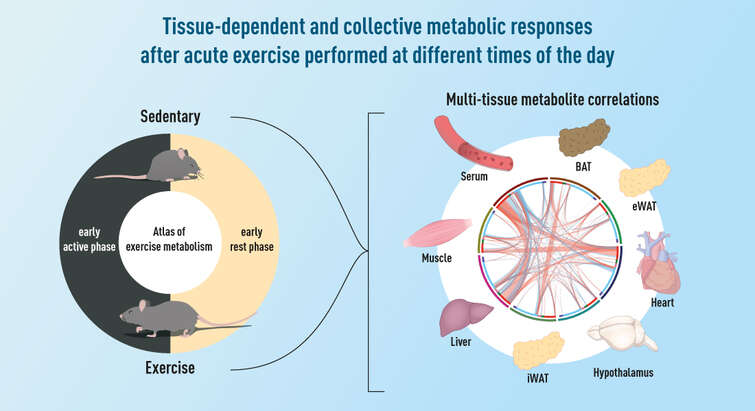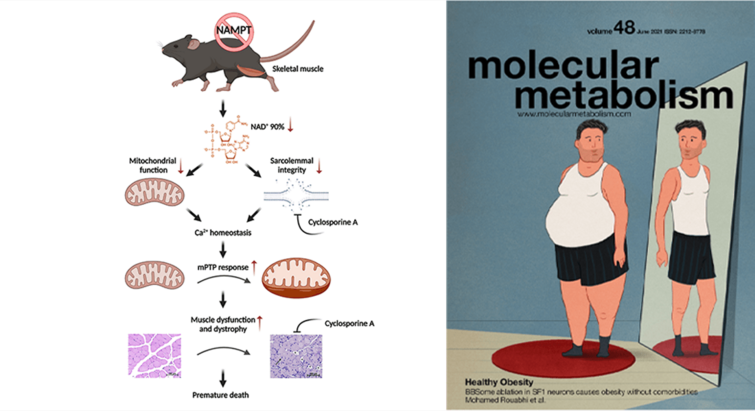
Molecular Metabolism in the Treebak Group
The overarching goal of the Treebak Group is to define the molecular and physiological mechanisms by which dietary compounds, weight loss, and physical activity improve metabolic health to prevent and treat obesity and type 2 diabetes.

Research Questions/Focus:
We are defining mechanisms linking cellular nicotinamide adenine dinucleotide (NAD) to metabolic health. In particular, we aim to determine the role of the NAD+ generating and consuming pathways for maintaining tissue function and adaptability in response to metabolic stress. We employ innovative preclinical models to manipulate NAD-related metabolites cell type-specifically and determine functional implications. Moreover, we apply unbiased omics approaches and advanced analytical pipelines to identify responsible mediators and to determine genotype/phenotype interactions. Preclinical findings are tested and translated in clinical settings.
“Hepatocyte-specific perturbation of NAD+ biosynthetic pathways in mice induces reversible nonalcoholic steatohepatitis-like phenotypes”
Hepatic NAD+ levels have been linked to the development of nonalcoholic fatty liver disease (NAFLD) in various preclinical rodent models. The data presented in this paper, published in Journal of Biological Chemistry in 2021, suggest a critical threshold level of hepatic NAD+ that determines the predisposition to liver injury. Moreover, the data support that NAD+ precursor supplementation can prevent liver injury and nonalcoholic fatty liver disease progression.
"Nampt controls skeletal muscle development by maintaining Ca 2+ homeostasis and mitochondrial integrity"
Published in Molecular Metabolism in 2021, this study determines the role of Nampt in skeletal muscle. We find that skeletal muscle-specific Nampt knockout mice have low NAD+ levels and exhibit a dystrophy-like phenotype that leads to juvenile death. This phenotype is linked to alterations in Ca2+ homeostasis and lack of NAMPT impairs mitochondrial function. Moreover, low NAD+ levels signal mitochondrial permeability transition pore (mPTP) opening, and inhibition of the mPTP response using cyclosporin A improves sarcolemma integrity and increases survival rate. These findings highlight an important role of NAMPT for skeletal muscle metabolism and function.
“A randomized placebo-controlled clinical trial of nicotinamide riboside in obese men: safety, insulin-sensitivity, and lipid-mobilizing effects”
Pre-clinical evidence suggests potent insulin sensitizing effects of dietary supplementation with the NAD+ precursor, nicotinamide riboside (NR). This study, published in American Journal of Clinical Nutrition in 2018, is the first to determine clinical potential of NR in middle-aged, obese and insulin resistant men. It finds no effects of NR on whole-body insulin sensitivity in the selected study group.
Staff list
| Name | Title | Phone | |
|---|---|---|---|
| Abachri, Firdawss | Bachelor student | +4535329720 | |
| Afshar-Bahadori, Yasmin | Guest Researcher | +4535334083 | |
| Aguilar Lozano, Sheila Patricia | Marie Curie Fellow | +4535322869 | |
| Crone-Rawe, Timotius Bernard Justus | Industrial PhD | ||
| Espino Gonzalez, Ever | External | +4535336372 | |
| Kellezi, Emilie Dalbram | Postdoc | +4535333791 | |
| Kurp, Anna Magdalena | Master Student | ||
| Li, Zhiquan | External | ||
| Rajsfus, Bia Francis | External, Ph.d Student | ||
| Treebak, Jonas Thue | Associate Professor | ||
| Yonamine, Caio Yogi | Postdoc | +4535327439 |





